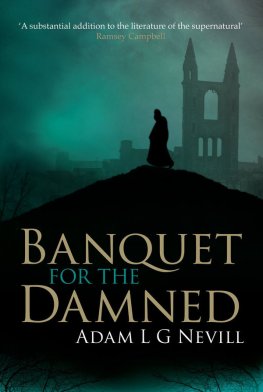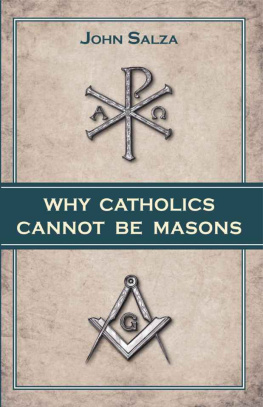THE HOUSE OF SMALL SHADOWS
Adam Nevill
For James Marriott
19722012
The first editor who brought me into print as a novelist, a faithful reader of my first drafts, a fellow devotee of the weird, and a great friend for fifteen years. Who will I rearrange the dark furniture of my mind with now? You are sorely missed, my friend, and always will be.
By a merging and interplay of identities between himself and his beautiful room, he might be preparing a ghost for the future; it had not occurred to him that there might have been a similar merging and coalescence in the past.
Oliver OnionsThe Beckoning Fair One
As if by a dream Catherine came to the Red House. She abandoned her car once the lanes dusty surface was choked by the hedgerows, and moved on foot through a tunnel of hawthorn and hazel trees to glimpse the steep pitch of the roof, the ruddy brick chimneys and the finials upon its sharp spine.
Unseasonably warm air for autumn drifted from the surrounding meadows to settle like fragrant gas upon the baked ground beneath her feet. Drowsy and barely aware of the hum emitted from the yellow wildflowers and waist-high summer grasses so hectic in the fields, she felt nostalgic for a time she wasnt even sure was part of her own experience, and imagined she was passing into another age.
When she came across the gardens brick walls of English bond, seized by ivy right along their length to the black gate, a surge of romantic feelings so surprised her, she felt dizzy. Until the house fully revealed itself and demanded all of her attention.
Her first impression was of a building enraged at being disturbed, rearing up at the sight of her between the gate posts. Twin chimney breasts, one per wing, mimicked arms flung upwards to claw the air. Roofs scaled in Welsh slate and spiked with iron crests at their peaks bristled like hackles.
All of the lines of the building pointed to the heavens. Two steep gables and the arch of every window beseeched the sky, as though the great house was a small cathedral indignant at its exile in rural Herefordshire. And despite over a century of rustication among uncultivated fields, the colour of its Accrington brick remained an angry red.
But on closer inspection, had the many windows been an assortment of eyes, from the tall rectangular portals of the first three storeys to the narrower dormer windows of the attic, the houses face now issued the impression of looking past her.
Unaware of Catherine, the many eyes beheld something else that only they could see, above and behind her. Around the windows, where the masonry was styled with polychromatic stone lintels, an expression of attentiveness to something in the distance had been created. A thing even more awe-inspiring than the building itself. Something the eyes of the house had gazed upon for a long time and feared too. So maybe what she perceived as wrathful silence in the countenance of the Red House was actually terror.
This was no indigenous building either. Few local materials had been used in its construction. The house had been built by someone very rich, able to import outside materials and a professional architect to create a vision in stone, probably modelled on a place they had once admired on the continent, perhaps in Flemish Belgium. Almost certainly the building was part of the Gothic revival in Queen Victorias long reign.
Judging by the distance of the Red House to the local village, Magbar Wood, two miles away and separated by hills and a rare spree of meadowland, she guessed the estate once belonged to a major landowner advantaged by the later enclosure acts. A man bent on isolation.
She had driven through Magbar Wood to reach the Red House, and now wondered if the squat terraced houses of the village were once occupied by the tenants of whoever built this unusual house. But the fact that the village had not expanded to the borders of the Red Houses grounds, and the surrounding fields remained untended, was unusual. On her travels to valuations and auctions at country residences, she hardly ever saw genuine meadows any more. Magbar Wood boasted at least two square miles of wild land circling itself and the house like a vast moat.
What was more difficult to accept was that she was not already aware of the building. She felt like an experienced walker stumbling across a new mountain in the Lake District. The house was such a unique spectacle there should have been signage to guide sightseers visits to the house, or at least proper public access.
Catherine considered the surface beneath her feet. Not even a road, just a lane of clay and broken stone. It seemed the Red House and the Mason family had not wanted to be found.
The grounds had also known better days. Beneath the Red Houses facade the front garden had once been landscaped, but was now given over to nettles, rye grasses and the spiky flowers of the meadow, thickets trapped half in the shadow of the house and the garden walls.
She hurried to the porch, when a group of plump black flies formed a persistent orbit around her, and tried to settle upon her exposed hands and wrists. But soon stopped and sucked in her breath. When no more than halfway down what was left of the front path, a face appeared at one of the cross windows of the first storey, pressed against the glass in the bottom corner, left of the vertical mullion. A small hand either waved at her or prepared to tap the glass. Either that or the figure was holding the horizontal transom to pull itself higher.
She considered returning the wave but the figure was gone before she managed to move her arm.
Catherine wasnt aware there were any children living here. According to her instructions there was only Edith Mason, M. H. Masons sole surviving heir, and the housekeeper who would receive Catherine. But the little face, and briefly waving hand, must have belonged to a pale child in some kind of hat.
She couldnt say whether it had been a girl or a boy, but what she had seen of the face in her peripheral vision had been wide with a grin of excitement, as if the child had been pleased to see her wading through the weeds of the front garden.
Half expecting to hear the thud of little feet descending the stairs inside the house, as the child raced to the front door to greet her, Catherine looked harder at the empty window and then at the front doors. But nothing stirred again behind the dark glass and no one came down to meet her.
She continued to the porch, one that should have stood before a church, not a domestic house, until the sombre roof of aged oak arched over her like a large hood.
One of the great front doors crafted from six panels, four hardwood and the top two filled with stained glass, was open, as if daring her to come inside without invitation. And through the gap she saw an unlit reception, a place made of burgundy walls and shadow, like a gullet, that seemed to reach into for ever.
Catherine looked back at the wild lawns and imagined the hawkbit and spotted orchids all turning their little bobbing heads in panic to stare at her, to send out small cries of warning. She pushed her sunglasses up and into her hair and briefly thought of returning to her car.
That lane you have walked was here long before this house was built. The brittle voice came from deep inside the building. A womans voice that softened, as if to speak to itself, and Catherine thought she heard, No one knew what would come down it.
ONE WEEK EARLIER
All of the small faces were turned to the door of the room. A myriad glass eyes watched her enter.
Jesus Christ.
The number of dolls and even their intentional arrangement startled Catherine less than the sense of anticipation she felt in their presence. She briefly imagined they had been waiting in the darkness for her like guests at a surprise party for a child, a century before.
















